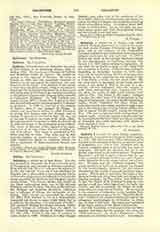

Callipolis, a titular see of Thrace, now called Gallipoli (Turkish Guelibolou), is a city in the southern part of the Thracian Chersonese, on the right shore, and at the entrance of the Dardanelles. Justinian fortified it and established there important military warehouses for corn and wine. In 1304 it became the center of that strange dominion created by the Almugavares, or Catalonian routiers, who burned it in. 1307, before retiring to Cassandria. It was taken by the Turks as early as 1357, being their first possession in Europe. Callipolis was a bishopric depending on Heracleia. Lequien (I, 1123) mentions only six Greek bishops, the first as being present at Ephesus in 431, when the see was united to that of Coela (Coelia or Coele), the last about 1500. His list could easily be increased, for the Greek see still exists; it was raised in 1904 to the rank of a metropolis, without suffragans, after the manner of most Greek metropolitan sees. Lequien (III, 971) also gives the names of eight Latin bishops, from 1208 to 1518. (See Eubel, I, 269, note.) Gallipoli is today the chief town of a Kaimakamlik in the vilayet of Adrianople, with about 30,000 inhabitants, Greeks, Turks, Armenians and Jews. There are numerous schools and a small museum; a large cemetery is the resting place of many French soldiers who died of disease (chiefly cholera) during the Crimean War. The port is bad and trade unimportant, for want of roads. A Catholic mission is conducted there by Assumptionist Fathers; there are also a number of Armenian and Greek Catholics, with priests of their respective rites.
S. PETRIDES

